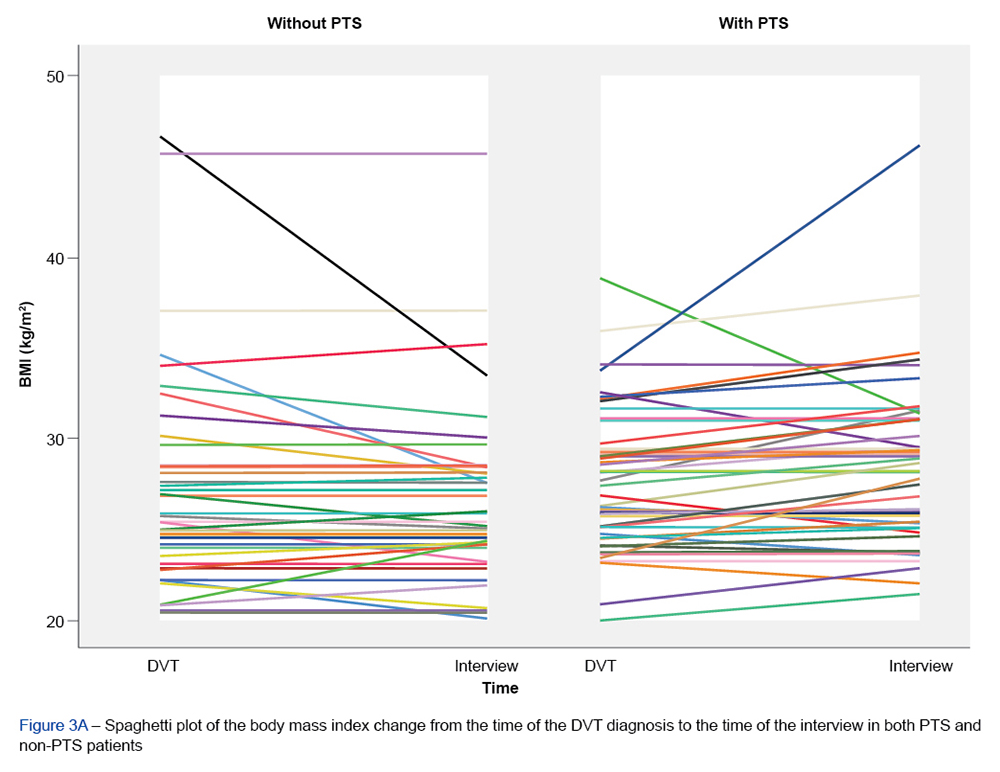SOCIAL MEDIA
Portuguese Medical Association's Scientific Journal

Introduction: Post-thrombotic syndrome is a frequent and disabling complication of deep venous thrombosis. Its incidence is not described in the Portuguese population. The objective of this study is to report the incidence and severity of post-thrombotic syndrome after the initial episode of deep venous thrombosis.
Material and Methods: This is an observational, unicentric, retrospective cohort of patients who had a first episode of deep venous thrombosis in the lower limb, documented with duplex ultrasound (n = 101). The modified Villalta score was applied by phone interview for the diagnosis and staging of post-thrombotic syndrome. The quality of life of patients was measured with the modified CIVIQ 14 classification.
Results: Median follow-up time was six years (interquartile range 1). Severe post-thrombotic syndrome was present in 27% of patients and moderate in 33%. Performing physical activity at the time of the interview was associated with lower incidence of post-thrombotic syndrome (relative risk 0.489; 95% confidence interval = 0.320 - 0.748). Body weight gain after deep venous thrombosis (relative risk 2.188; 95% confidence interval 1.137 - 4.210) and lower education levels (relative risk 2.005; 95% confidence interval 1.297 - 3.098) were associated positively with post-thrombotic syndrome. Quality of life was 90 ± 17 vs 64 ± 18 vs 43 ± 15 in patients without postthrombotic syndrome, with moderate post-thrombotic syndrome and with severe post-thrombotic syndrome, respectively (p < 0.001).
Discussion: The long-term incidence of post-thrombotic syndrome in a cohort of patients from Northern Portugal is higher than in other studies and correlates with worse adjusted CIVIQ-14 scores.
Conclusion: Large studies of prospective nature could provide more definitive evidence.